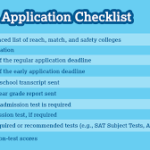Choosing the right school for your child can feel overwhelming, especially with so many options available. Two popular choices are charter schools and traditional public schools. While both are publicly funded, they operate differently and offer unique benefits and challenges. In this article, we’ll break down the key differences between charter schools and traditional public schools to help you make an informed decision.
What Are Traditional Public Schools?
Traditional public schools are funded by the government and are free to attend. They follow state educational standards and are open to all students within a designated district. These schools are run by local school boards and must adhere to strict regulations.
What Are Charter Schools?
Charter schools are also publicly funded but operate independently of the traditional public school system. They are often run by private organizations, nonprofits, or groups of educators. In exchange for more flexibility in their curriculum and teaching methods, charter schools are held accountable for meeting specific performance goals outlined in their “charter.”
Key Differences Between Charter Schools and Traditional Public Schools
1. Governance and Accountability

- Traditional Public Schools: Run by local school boards and subject to state regulations. They must follow standardized curricula and testing requirements.
- Charter Schools: Operate independently under a charter agreement. They have more freedom to innovate but must meet specific academic and operational goals to stay open.
2. Admissions Process
- Traditional Public Schools: Open to all students within a designated district. Enrollment is typically based on residency.
- Charter Schools: Open to all students, but if there are more applicants than spots, admission is often determined by a lottery system.
3. Curriculum and Teaching Methods
- Traditional Public Schools: Follow a standardized curriculum set by the state. Teachers must meet state certification requirements.
- Charter Schools: Have the flexibility to design their own curriculum and teaching methods. Some focus on specific themes, such as STEM, arts, or college preparation.
4. Class Sizes
- Traditional Public Schools: Often have larger class sizes due to higher enrollment.
- Charter Schools: Typically have smaller class sizes, allowing for more individualized attention.
5. Funding
- Traditional Public Schools: Funded by local, state, and federal taxes. Funding is distributed based on district needs.
- Charter Schools: Also publicly funded but often receive less per-student funding than traditional public schools. They may rely on donations or grants to supplement their budgets.
6. Teacher Requirements
- Traditional Public Schools: Teachers must be state-certified and meet specific educational and licensing requirements.
- Charter Schools: May hire teachers who are not state-certified, depending on the school’s charter. This allows for more flexibility in hiring but can lead to variability in teacher qualifications.
7. Parental Involvement
- Traditional Public Schools: Parental involvement varies but is often encouraged through PTA meetings and school events.
- Charter Schools: Many charter schools require or strongly encourage parental involvement as part of their mission.
Pros and Cons of Traditional Public Schools
Pros:
- Free and Accessible: Open to all students within a district.
- Diverse Student Body: Often reflect the diversity of the community.
- Extracurricular Activities: Offer a wide range of sports, clubs, and programs.
- Special Education Services: Required to provide support for students with special needs.
Cons:
- Large Class Sizes: Can limit individual attention.
- Limited Flexibility: Must follow a standardized curriculum.
- Bureaucracy: Subject to strict regulations and slow decision-making processes.
Pros and Cons of Charter Schools
Pros:
- Innovative Teaching Methods: Flexibility to design unique curricula and teaching approaches.
- Smaller Class Sizes: Often provide more personalized attention.
- Specialized Focus: Many charter schools focus on specific themes or educational philosophies.
- Parental Involvement: Often encourage or require active participation from parents.
Cons:
- Limited Access: Admission is often determined by lottery if there are more applicants than spots.
- Funding Challenges: May receive less funding than traditional public schools.
- Accountability Risks: If a charter school fails to meet its performance goals, it can be closed.
- Variable Quality: The quality of charter schools can vary widely.
Which is the Better Choice for Your Child?
The decision between charter schools and traditional public schools depends on your child’s needs, your family’s values, and the options available in your area. Here are some questions to consider:
- Does your child need a more personalized or specialized learning environment?
- Are you looking for a school with smaller class sizes and innovative teaching methods?
- How important is parental involvement in your child’s education?
- What are the quality and reputation of the schools in your area?
Final Thoughts
Both charter schools and traditional public schools have their strengths and weaknesses. Traditional public schools offer stability, accessibility, and a diverse student body, while charter schools provide flexibility, innovation, and often a more specialized focus.
By understanding the key differences and evaluating your child’s unique needs, you can make an informed decision that sets them up for success. Remember, the best school is one where your child feels supported, challenged, and inspired to learn.











